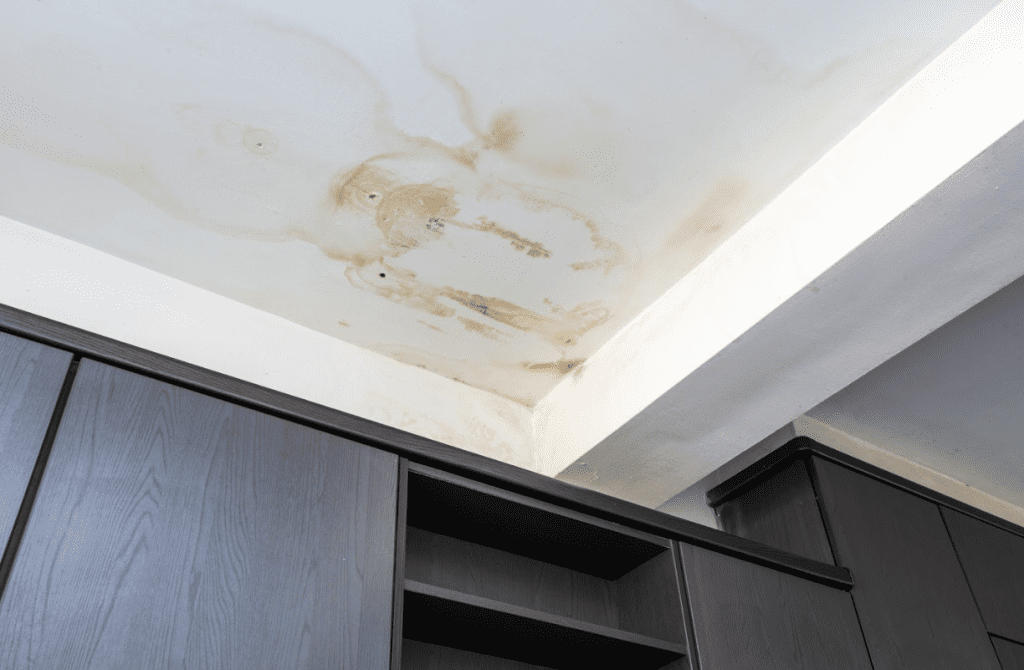Roof leaks can be a homeowner’s worst nightmare. They not only cause unsightly stains and water damage but can also lead to costly repairs if left unaddressed. Ignoring even a small leak can eventually result in structural damage, mold growth, and decreased energy efficiency.
Fortunately, there are several effective ways to protect your home from the perils of roof leaks. Some of these include the following:
1. Identify The Source of The Leak
Before you use solutions like gutter splash guards, the first step in any roof repair journey involves pinpointing the exact location of the leak. Often, the origin isn’t directly above the water damage in your home’s interior.
Check for missing, damaged, or aged shingles. Look closely at roof flashing, vents, and chimneys for any gaps or wear and tear. Attics can also offer clues, so grab a flashlight and search for water stains, mold, or black marks.
2. Conduct Regular Roof Inspections
Stay one step ahead of leaks by conducting regular roof inspections. A bi-annual checkup, typically in the spring and fall, can reveal potential issues before they escalate.
Look for cracked, warped, or missing shingles and inspect seals around vents and chimneys. For flat roofs, check for signs of ponding, blisters, or cracks in the roofing membrane.
If you’re uncomfortable doing this yourself, hiring a professional is a smart move. They can spot trouble areas you might miss and provide solutions to prevent mold and mildew from taking hold.
3. Maintain Clean Gutters
A clogged gutter can cause water to pool on your roof, leading to leaks. Ensuring your gutters are clean is a simple yet effective way to protect your home. Twice a year, clear out leaves, twigs, and debris. This task not only prevents leaks but also extends the lifespan of your roof.
However, know that while gutter cleaning is crucial for all roof types, flat roofs require regular inspection of drainage systems. This ensures they are free from blockage, preventing water from pooling on the roof surface.
4. Trim Overhanging Branches
Trees can add beauty and shade to your property, but overhanging branches pose a risk to your roof. They can scrape against roofing materials, leading to damage, or drop leaves and branches that clog gutters. Trimming these branches back protects your roof from physical damage and keeps gutters clear.
5. Install Proper Insulation
Roof insulation helps prevent leaks by maintaining a consistent temperature within your attic. This consistency helps prevent the formation of ice dams — accumulations of ice at the roof’s edge, which block the path for melting snow to drain away. Ensuring your attic is properly insulated keeps your roof cold in winter, preventing these dams from forming.
6. Improve Roof Ventilation
Good attic ventilation is crucial to prevent leaks and extend the lifespan of your roof. Here’s how to ensure your attic’s ventilation is up to par:
- Check for Blockages: Ensure that intake vents along the soffit aren’t blocked and that exhaust vents at the roof’s peak are clear to allow air to flow freely.
- Assess Ventilation Needs: Your attic should have 1 square foot of vent area for every 150 square feet of attic space, or 1 square foot per 300 square feet if the attic floor is well-insulated.
- Professional Evaluation: If unsure about your attic’s ventilation, consider a professional assessment to tailor solutions to your home.
Ensuring proper ventilation helps prevent moisture buildup and roof leaks, safeguarding your home.
7. Seal Flashing And Valleys
Flashing and valleys are common sites for leaks. Flashing—the metal strips installed around chimneys, skylights, and vents—can pull away from roofing materials over time. Valleys, where two roof planes meet, can also collect water and debris, causing leaks. Inspecting and sealing these areas can prevent water intrusion.
8. Opt For Quality Roofing Materials
When repairs or a new roof is necessary, opting for high-quality materials can make a significant difference. Durable, weather-resistant materials may cost more upfront but can withstand the elements better and last longer. Consider materials suited to your climate and the design of your home.
9. Hire A Professional Roofer
When it comes to serious roof work or finding roof leaks, the expertise of a professional roofer is invaluable. They bring a depth of knowledge that covers everything from the latest roofing techniques to understanding local building codes. For residents and businesses, roofing contractors in Houston are the go-to experts for ensuring quality and compliance.
Moreover, a professional roofer can identify underlying issues that might not be visible to the untrained eye. This level of insight ensures that all aspects of your roof’s condition are addressed, offering a comprehensive solution that extends beyond mere surface repairs.
Conclusion
Dealing with a roof leak effectively involves a combination of preventative measures, regular maintenance, and timely repairs, tailored to the specific type of roof you have. By following the steps outlined in this guide and considering the unique needs of your roof, whether it be sloped, shingled, or flat, you can protect your home from water damage, ensuring your roof remains in top condition for years to come.






